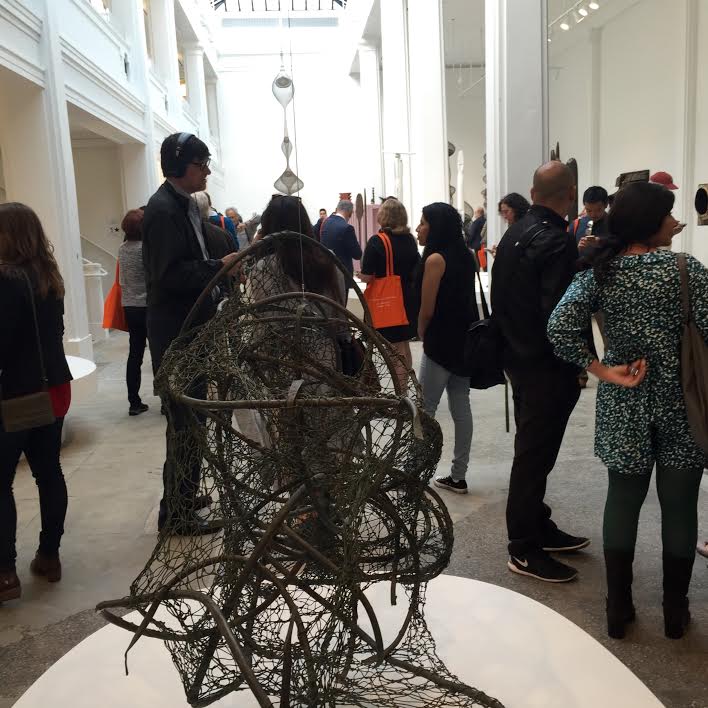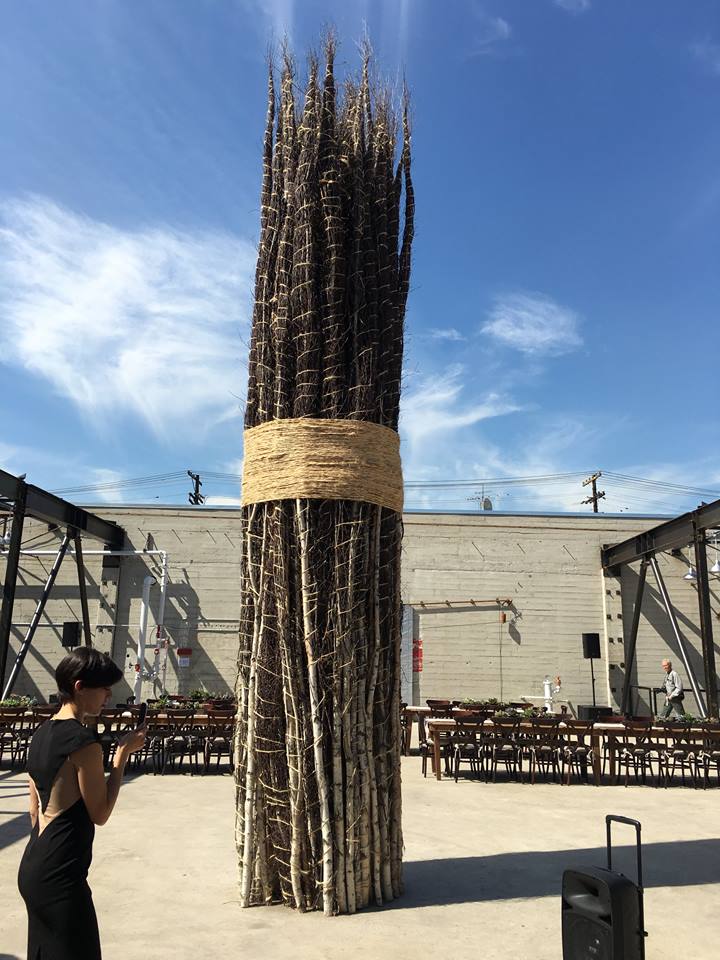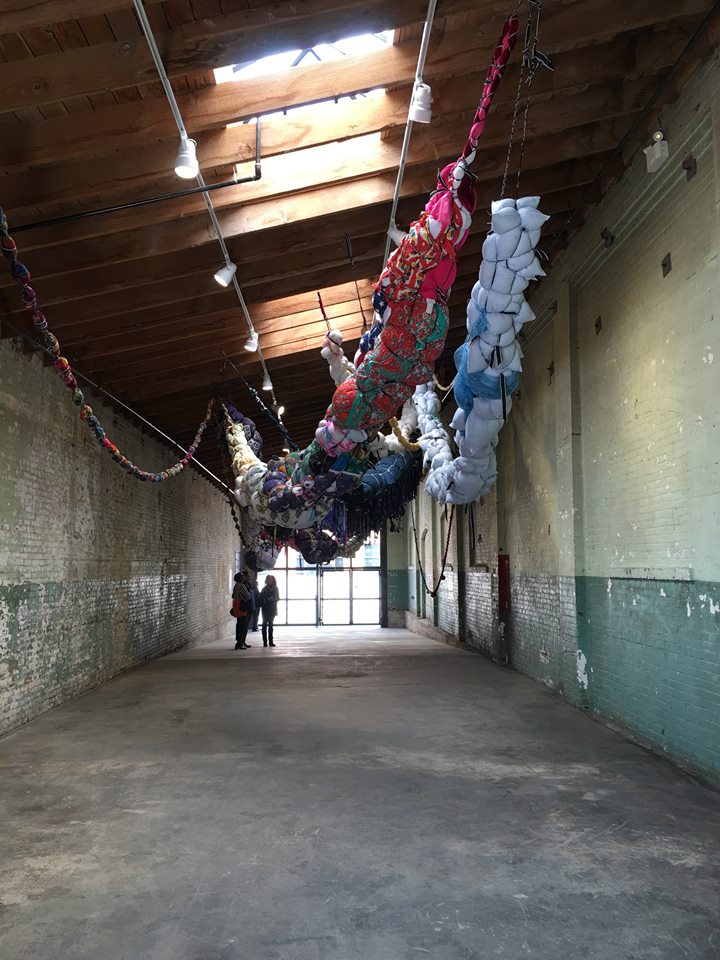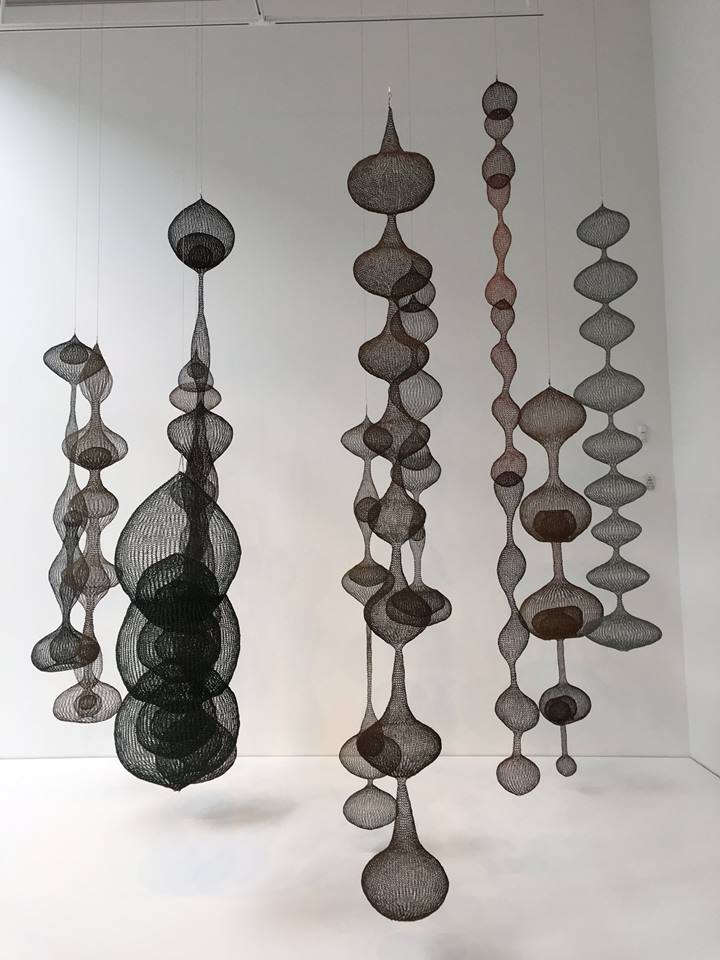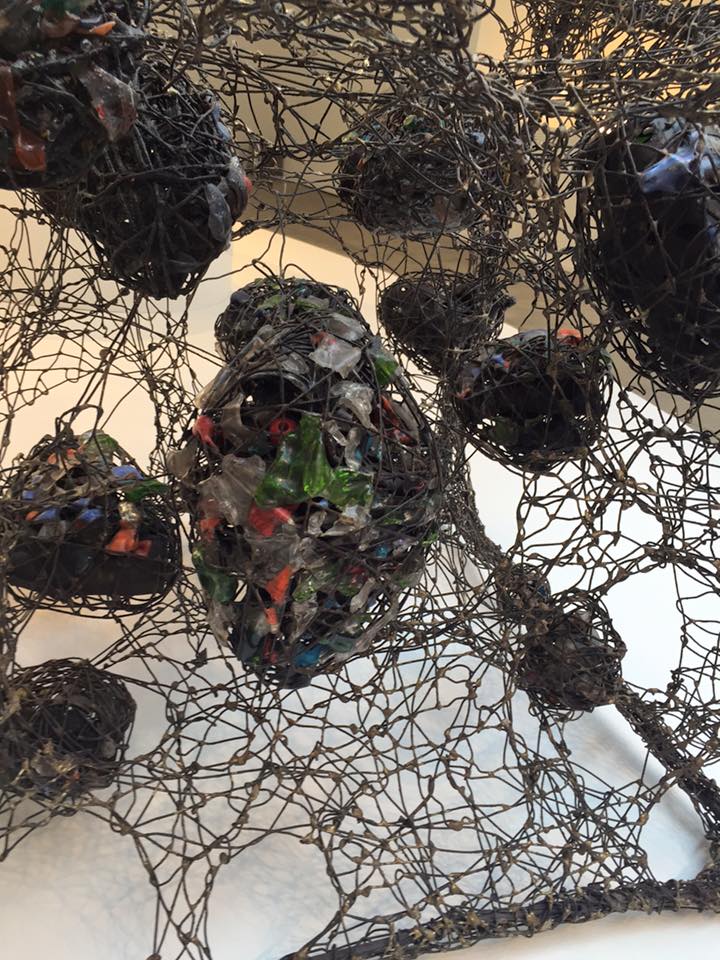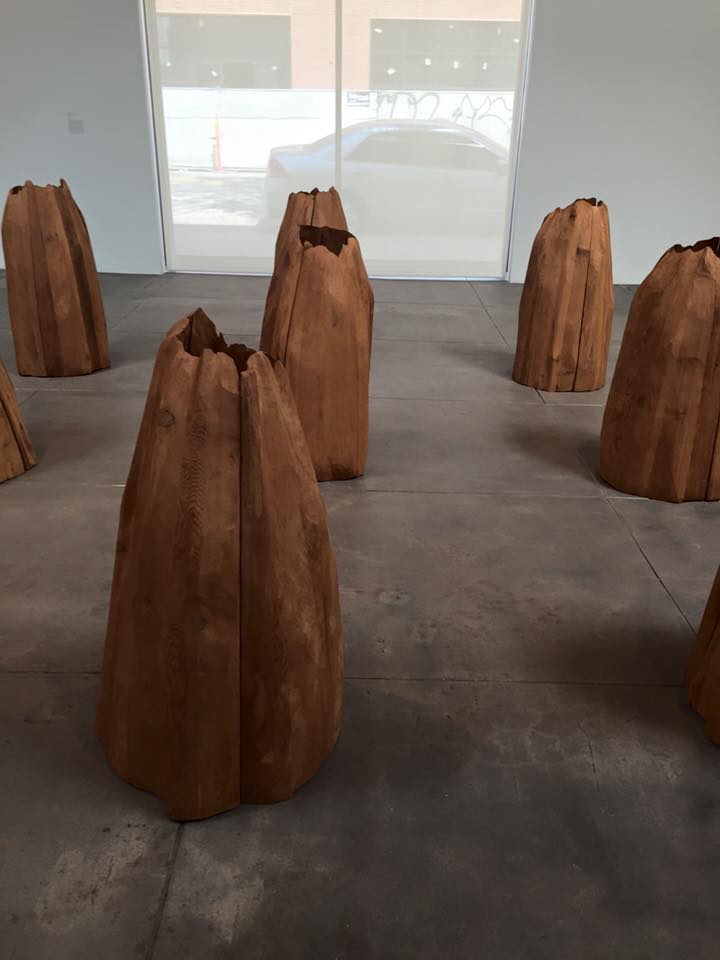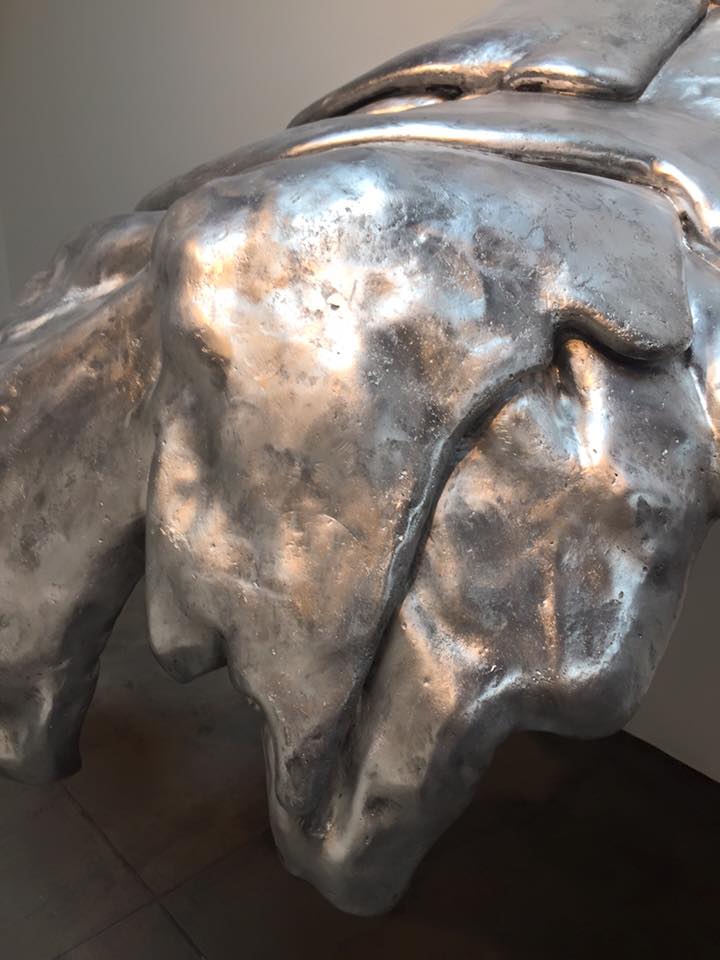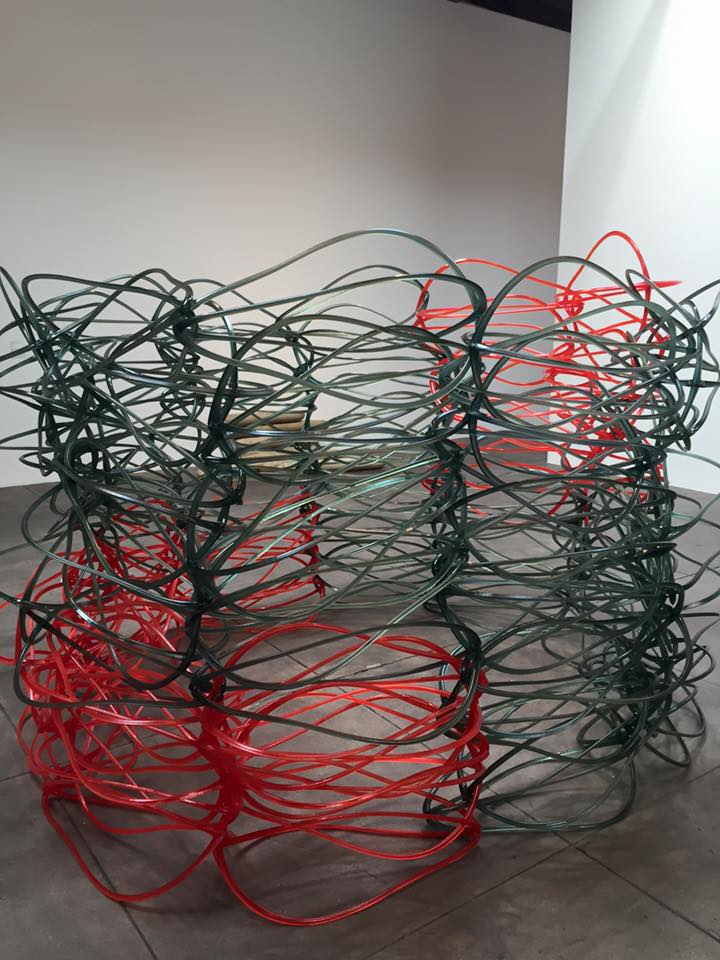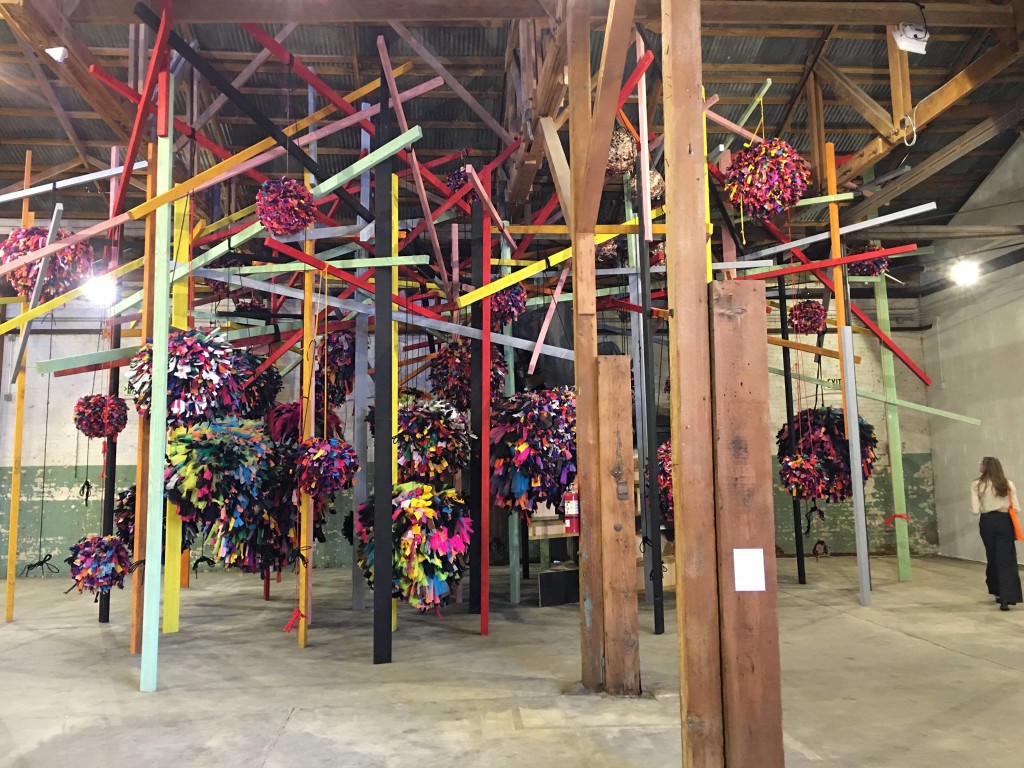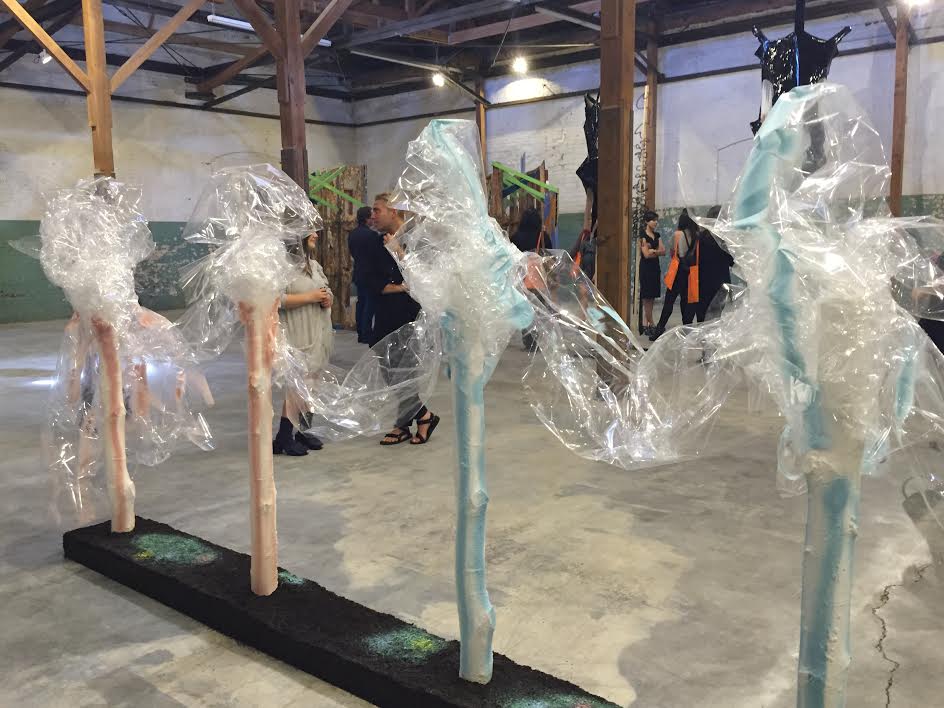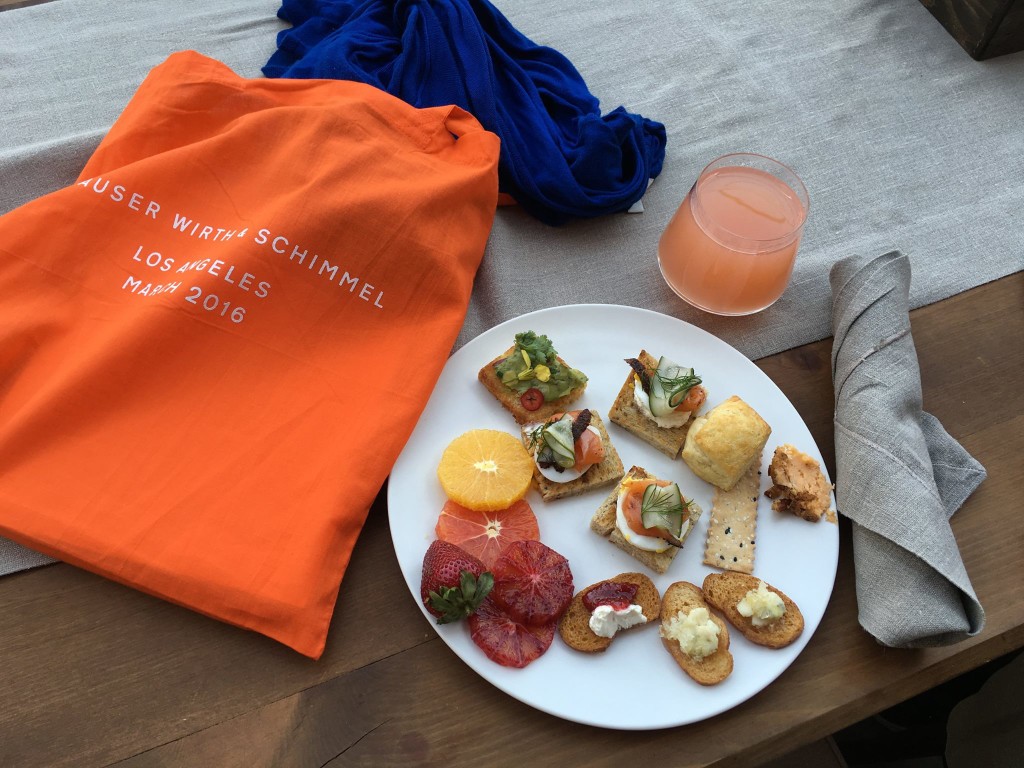DTLA’s burgeoning art scene now has a strong international presence with the opening of Hauser, Wirth & Schimmel in what was once the Globe Mills flour factory.
A vast, 10,000-square-foot complex with a beautiful, open outdoor plaza, the gallery includes bookstore ARTBOOK, and will, come summer, feature it’s own restaurant, Manuela.
Above, Jackie Winsor’s “30 to 1 Bound Trees,” originally created in Nova Scotia for a contest in the early 1970s and re-created here.
It may be the open public space that is the most appealing aspect of the vast and – pun intended – artfully restored building. The courtyard’s sunshine is entirely Los Angeles in nature, and this space, which links the galleries, plus the soon-to-be-developed public gardens brings back an evocative childhood memory of the skylit courtyard in the National Gallery of Art in Washington, D.C., alive with plants and fountains.
Such a space was a pleasure for a child, and for adults to breathe a little while their eyes, hearts, and minds took in all the art on view.
A Hauser, Wirth & Schimmel, a dedication to this open and breathable space also has carved out a passageway between 2nd and 3rd streets. The artwork hanging above the public passage is “Forgiving Strands,” by Shinique Smith.
Hauser Wirth & Schimmel was founded in 1992 by Manuela Wirth and her mother Ursula Hauser. The gallery now has locations in Zurich, London, New York, and Somerset, England. The Somerset property is a holistic creation on rural land; the gallery’s Los Angeles incarnation aims for a similar completeness. Iwan Wirth describes the DTLA space as providing “a way to seek to connect art through community, conservation, and discoveries.” Paul Schimmel adds “We want to expand the notion of what a gallery can be and it’s relationship to the artist. It’s our certainty that people will come from all over the world.”
Ruth Asawa’s delicate suspended sculptures above seem like cocoons for living beings.
The co-curator of the opening exhibition, Jenni Sorkin, notes that the gallery itself is broken into four different spaces, whose openness within each room and their separation from each other works spectacularly well as museum-like space for the opening exhibition, “Revolution in the Making: Abstract Sculpture by Women 1947-2016.” A survey of sculpture by women from post-World War II to the present, the art on display includes that of seminal French sculptor Louise Bourgeois, German-born Eva Hesse, Brazilian Lygia Pape, Tokyo-based Yayoi Kusama, New York-based Louise Nevelson, Ruth Asawa, and Lee Bontecou, among others.
Above, Claire Falkenstein, who began her career as a sculptor crafting jewelry.
The towering ceilings of the south gallery features the progenitors of abstract sculptures, dating from a pre-WWII era when sculpture itself was dominated by men making large scale works. Sorkin explains that there was a gendered division in the public school system in which boys were sent to skilled labor shop classes and girls to home ec. “Women were not given the skill set to build and make,” Sorkin reports, which makes the pieces in this first gallery all the more impressive.
Women needed, Sorkin notes, not a room of one’s own as Virginia Wolf expressed, but a studio of their own.
Moving into the north gallery, seminal pieces such as “Wheel With Rope,” by Polish artist Magdalena Abakanowicz were created in the 70s, as were New York-based Ursula von Rydingsvard’s “Untitled (Nine Cones),” above. These cedar pieces were hand-tooled in her studio. Like many other pieces in the exhibition, including a pair of sculptures by Lynda Benglis made from aluminum, below, there is a living quality to the pieces, as if they housed creatures now born.
Below, work by Liz Larner.
The east gallery houses the most contemporary works, and also the largest installations. Not a coincidence: now, as we approach more current work, women sculptors finally have the space to think big. They also have the permission to create in vibrant color. Here are the works of Abigail Deville, and Rachel Khedoori who used craft techniques in her creations; large scale pom-poms that could be massive cat toys are the work of Phyllida Barlow. Knee high pantyhose, chopsticks, discarded couches – found art elements, recycled materials are key here.
The exuberant and all too rare female-driven opening exhibition is a don’t miss; and then you’ll want to see and experience the gallery space itself.
Press was lucky enough to score a delightful brunch – we look forward to seeing what summer’s addition of a dining space will provide.
Hauser, Wirth & Schimmel is located at 901 E 3rd St. in DTLA.
http://www.hauserwirthschimmel.com/



